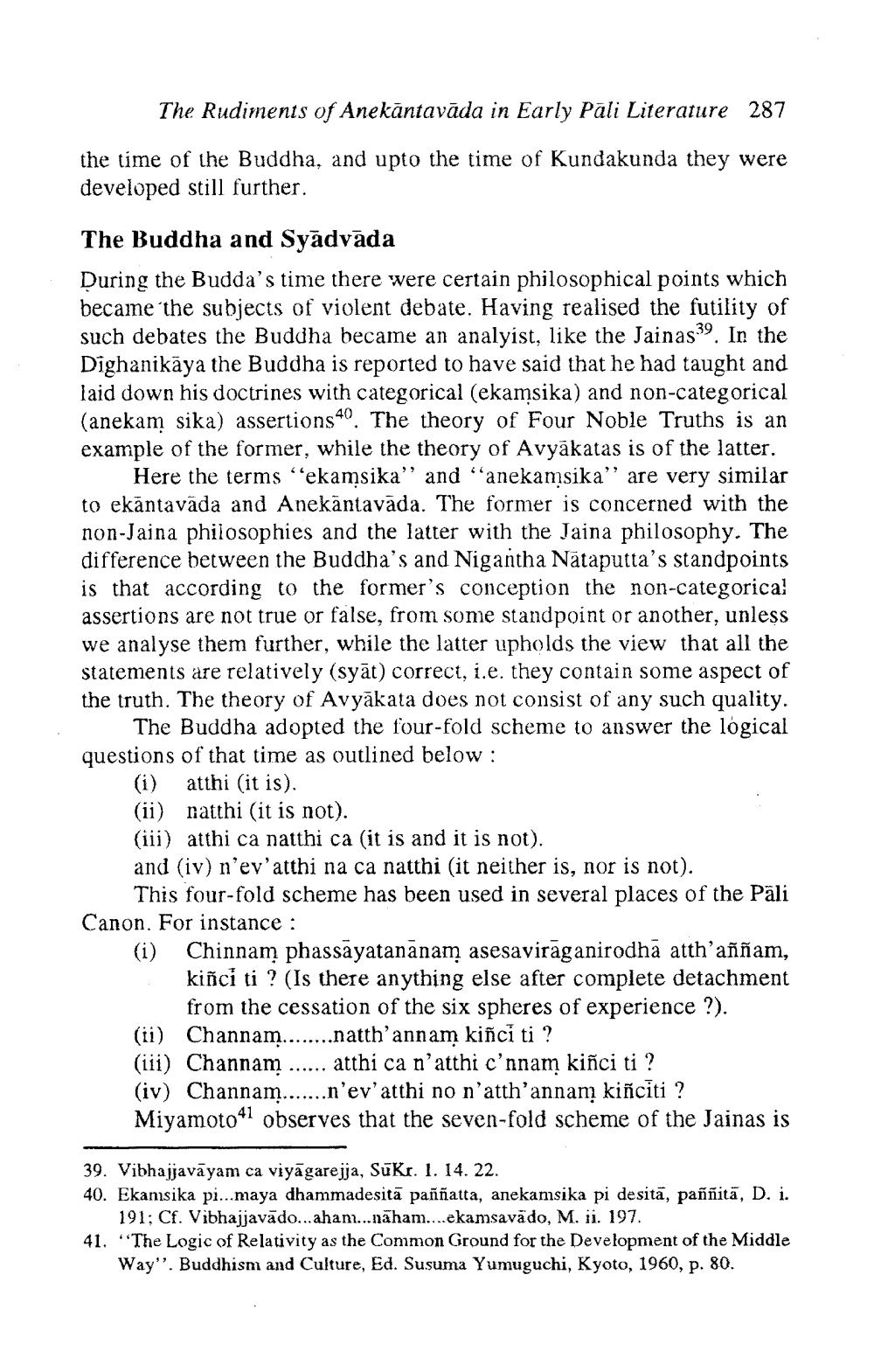________________
The Rudiments of Anekāntavāda in Early Pali Literature 287
the time of the Buddha, and upto the time of Kundakunda they were developed still further.
The Buddha and Syädvāda During the Budda's time there were certain philosophical points which became the subjects of violent debate. Having realised the futility of such debates the Buddha became an analyist, like the Jainas 39. In the Dighanikāya the Buddha is reported to have said that he had taught and laid down his doctrines with categorical (ekamsika) and non-categorical (anekam sika) assertions40. The theory of Four Noble Truths is an example of the former, while the theory of Avyākatas is of the latter.
Here the terms "ekamsika" and "anekamsika" are very similar to ekāntavāda and Anekāntavāda. The former is concerned with the non-Jaina philosophies and the latter with the Jaina philosophy. The difference between the Buddha's and Nigantha Nātaputta's standpoints is that according to the former's conception the non-categorica: assertions are not true or false, from some standpoint or another, unless we analyse them further, while the latter upholds the view that all the statements are relatively (syāt) correct, i.e. they contain some aspect of the truth. The theory of Avyākata does not consist of any such quality.
The Buddha adopted the four-fold scheme to answer the logical questions of that time as outlined below:
(i) atthi (it is). (ii) natthi (it is not). (iii) atthi ca natthi ca (it is and it is not). and (iv) n'ey'atthi na ca natthi (it neither is, nor is not).
This four-fold scheme has been used in several places of the Pāli Canon. For instance : (i) Chinnam phassāyatanānam asesavirāganirodhā atth’aññam,
kinci ti ? (Is there anything else after complete detachment
from the cessation of the six spheres of experience ?). (ii) Channam.......natth'annam kiñci ti ? (iii) Channam ...... atthi ca n'atthi c'nnam kiñci ti ? (iv) Channam.......n'ev'atthi no n'atth'annam kiñciti ? Miyamoto41 observes that the seven-fold scheme of the Jainas is
39. Vibhajjavāyam ca viyāgarejja, Sukr. 1. 14. 22. 40. Ekamsika pi...maya dhammadesitā paññatta, anekamsika pi desitā, paññitā, D. i.
191; Cf. Vibhajjavādo...aham...näham....ekamsavādo, M. ii. 197. 41. "The Logic of Relativity as the Common Ground for the Development of the Middle
Way". Buddhism and Culture, Ed. Susuma Yumuguchi, Kyoto, 1960, p. 80.




